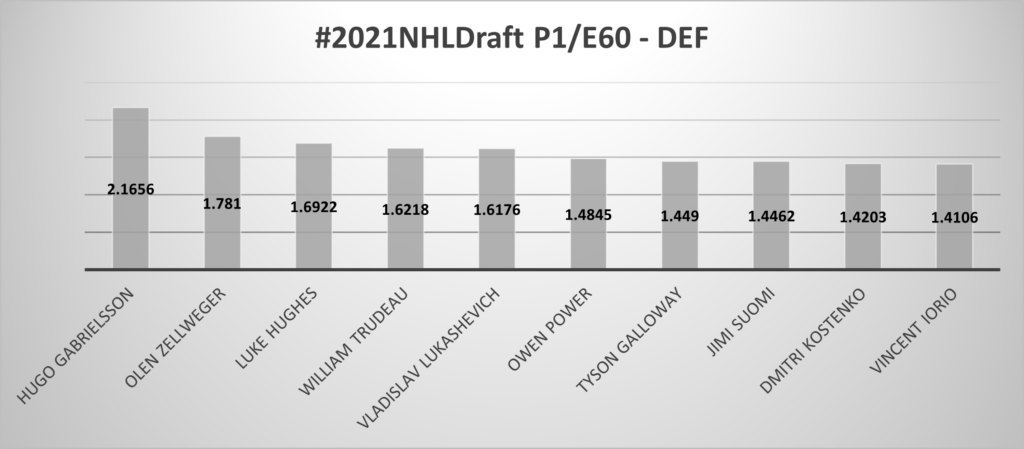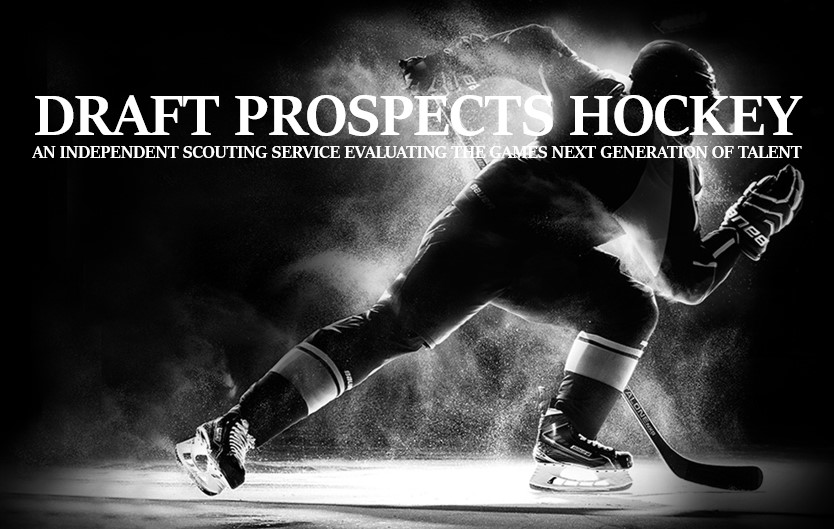THE ANALYTIC DARLINGS OF THE 2021 NHL DRAFT
By Dan Stewart
In our humble opinion, advanced stats or analytics, whatever you want to call them, are not and can never become a substitute for actually getting to the rink and watching how a player performs on the ice, being able to see a season or more worth of development and progression. The art of scouting, picking the right prospect for your team and one that will excel at the NHL level has too many variables to chalk it up to just a numbers crunch. But that is not to say that some of this data will not help. Quite the contrary, and NHL teams have openly accepted them as an add-on to actual scouting and evaluating.
The one statistic that stands out to us as a pretty good indicator of NHL success for draft prospects is the P1/E60 tracker which calculates the total primary points per estimated sixty minutes of ice time during their season. Primary points are important as it is proven that your primary point total indicates a play driving component to ones play more so than someone who builds point total through secondary assists, especially where forwards are concerned.
Also, by analyzing what prospects do on a somewhat even playing field, as in everyone getting the same time on ice, sixty minutes or one whole game, this eliminates the argument that one prospect might see more ice time than another when comparing. Being able to look at recent comparables and how they performed in the same league also aids to tighten down the projection. As the top end baseline comparable, back in his draft year NHL Superstar Connor McDavid had the highest recorded P1/E60 since the statistic started to be tracked in 2008, a ridiculous 6.08.
He had 94 primary points in his draft year while playing 47 total games for Erie of the OHL and accumulating 26 more secondary points for a total of 120 points. It blows your mind how good McDavid was during his draft year.
When we look at the 2021 crop, and set a minimum time on ice and game filter to knock out any overinflated data, the top dog is Edmonton Oil Kings winger Dylan Guenther (5.91).

Samu Salminen (4.43), Oskar Olausson (4.31), and William Stromgren (4.27) are also all above four primary points per 60 minutes a game. Those are pretty good stats when you consider current NHL stars who in their DY (draft year) produced at similar P1/E60 rates such as Taylor Hall at 5.01, Steven Stamkos at 4.94, Mitch Marner at 4.71, Leon Draisaitl at 4.71, John Tavares at 4.39, Andrei Svechnikov at 4.26, Nathan Mackinnon at 4.01 and Tyler Seguin at 4.01.
In 2020, the second overall pick, Quinton Byfield (4.48) of Los Angeles, led the pack with Carolina first round pick, Seth Jarvis, (4.40) coming in second. Emil Heineman (4.19), a second rounder of Calgary, came in third, Marco Rossi of Minnesota (4.18) fourth, Cole Perfetti of Winnipeg (4.11) fifth, and 2020 NHL Draft headliner Alexis Lafreniere of the New York Rangers (4.01) sixth.
Sure there are some who did not live up to the expected NHL upside comparable to their P1/E60 rating such as Portland forward Nic Petan who had a 4.36 in his draft year or Scott Glennie of Brandon who came in at 4.23 during his draft year, but those cases are few and far between.

On defense Ryan Ellis of the Nashville Predators holds the top P1/E60 since it was tracked in 2008 at 2.88 with the Windsor Spitfires of the OHL. Anything over a two is excellent for blueliners.
Toronto’s Morgan Rielly had a DY P1/E60 of 1.88, Colorado defender Bowen Byram was 1.79 and Aaron Ekblad at 1.59, Tyson Barrie at 1.58, Seth Jones at 1.56, Drew Doughty at 1.52 and Alex Pietrangelo at 1.46 all give you an idea where the NHL stars sat in their draft years.
Surprisingly it was not Luke Hughes or Olen Zellweger leading the 2021 class but instead Swedish J20 defender Hugo Gabrielsson at 2.17. Zellweger (1.78) and Hughes (1.69) did finish top three however but accumulated a fair amount of offensive production on the powerplay which this stat does not track. Potential top pick Owen Power (1.49) finished sixth on the list. Of the highest ranked defenseman in the 2020 draft, Jamie Drysdale, Anaheim top pick in round one, had a 1.59 P1/E60.
Again, what analytics cannot tell us is if the prospect has a hitch in his skating stride that may keep him from producing at higher levels when things move faster, or determine the work ethic and desire to succeed each prospect possesses, or if there is a reoccurring injury that might reduce his effectiveness as he progresses. It does not weight the pros and cons of physical abilities or size, if a prospect is too small to make the same impact against larger opponents, or even the value of a powerplay specialist, it only showing what data has been produced on the ice in an even playing field. That is why combining the eyeball test with these analytics is so important.
So, what does this all mean?
Where analytics are concerned, the comparable historical-based data suggest Guenther and Gabrielsson could lead the pack for the 2021 NHL Draft.
Powered by www.pick224.com

